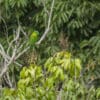Yellow-breasted Racquet-tailed Parrot
Also known as:
Red-spotted Racquet-tail, Yellow-breasted Racquet-tail, Red-spotted Racquet-tailed Parrot
Also known as:
Red-spotted Racquet-tail, Yellow-breasted Racquet-tail, Red-spotted Racquet-tailed Parrot
DID YOU KNOW?
The only reported instance of this parrot in aviculture was a single bird in London Zoo in 1930.

Prioniturus

flavicans
Size:
37 cm (14.4 in)
Weight:
—
Subspecies including nominate:
one
Colour Adult:
Male-mostly green body with olive/yellow breast and neck to mantle; crown and back of head deep blue with red mark in centre; central tail feathers green with black “racquets”, side tail feathers green tipped with black. Beak pale grey. Eye dark brown. Female-crown without red, and less blue.
Colour Juvenile:
As in adult female but little blue on crown; no racquets on tail.
Call:
Screech that is drawn out with alternating notes. Also alarm call chang-chang.
Yellow-breasted Racquet-tailed Parrot – AVoCet Cornell Lab Macaulay Library
More Information:
Content Sources:
CITES
BirdLife International
Cornell Lab of Ornithology/Birds of the World
A Guide to Parrots of the World, Juniper and Parr, 1998
Parrots of the World, Forshaw, 2006. 2010 edition
Captive Status:
Not found in captivity.
Longevity:
—
Housing:
—
Diet:
—
Enrichment:
—
Nest Box Size:
—
Clutch Size:
Not recorded.
Fledging Age:
—
Hatch Weight:
—
Peak Weight:
—
Weaning Weight:
—
World Population:
40,000-95,000 mature individuals, decreasing.
IUCN Red List Status:
Near Threatened
CITES Listing:
Appendix II
Threat Summary:
Not globally threatened. A BirdLife “restricted-range” species. Extensive forest loss in lowland areas in its range, particularly Sulawesi, has raised concerns about its survival. In the three generations (13.4 years) to 2022, forest cover extent in its range reduced by c.15-17%. This does not account for habitat degradation, which is rampant in northern Sulawesi and, to a lesser extent, on the Togian islands. Although the species visits higher elevations and degraded habitats, it is thought to do so only to feed and relies on lowland forest with nesting hollows to breed. Evaluating the scant data available, over the past three generations the species is therefore suspected to have declined by 15-25%. In the future three generations, this may accelerate to 20-29%.
Range:
Found in N and NC Sulawesi, south to lat. 1 degree 30 minutes N, and nearby Bangka, Lembeh, Togian, and possibly Banggai Islands, Indonesia.
Habitat:
Found up to 1000 m (3280 ft) in primary forest; also in remnant trees in cultivated areas.
Wild Diet:
Little known, but is thought to forage among flocks of fruit-eating birds.
Ecology and Behaviour:
A quiet and inconspicuous bird, encountered in pairs or small groups. Stays in upper canopy, moving very slowly amongst the branches.
Clutch and Egg Size:
Not recorded.
Breeding Season:
Not recorded.
Related Links:
—
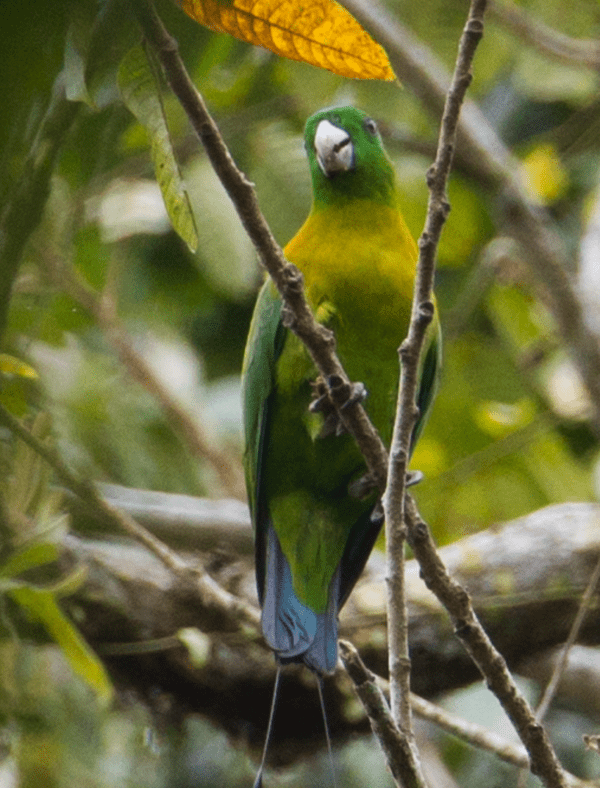

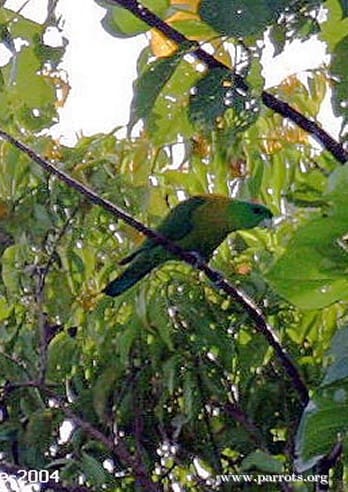
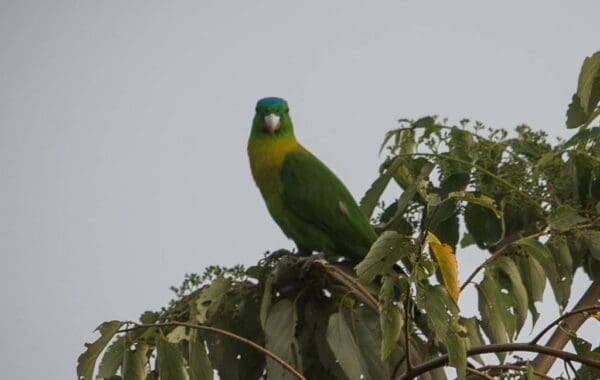
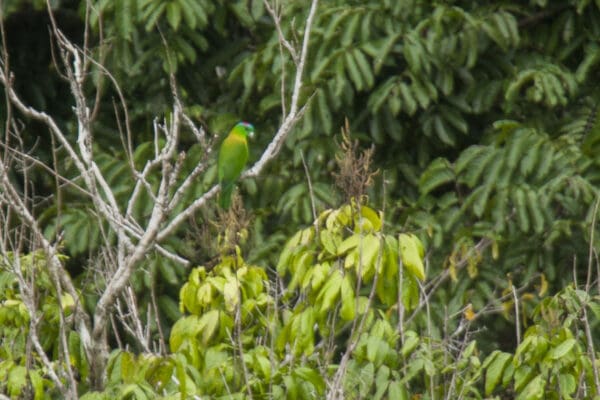
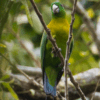
![© John Gould [Public domain] via Wikimedia Commons](https://parrots.org/wp-content/uploads/2023/01/wpt_Yellow-breasted-Racquet-tailed-Parrot_1155-1-100x100.jpg)
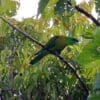
![© Jason Thompson [CC BY 2.0 ] via Wikimedia Commons A wild Yellow-breasted Racquet-tailed Parrot perches atop a tree](https://parrots.org/wp-content/uploads/1991/02/Yellow-breasted-Racquet-tailed-Parrot-lg-Jason-Thompson-100x100.jpg)
